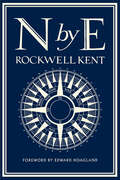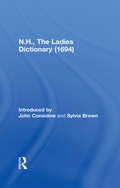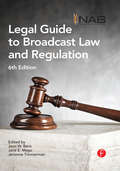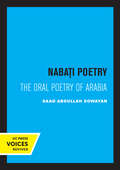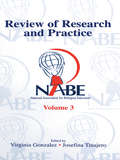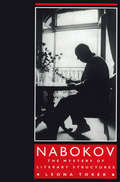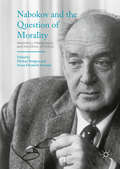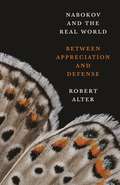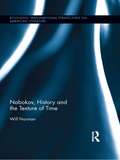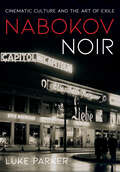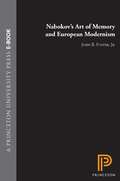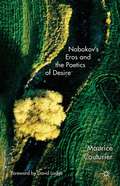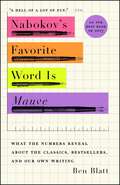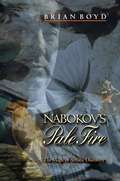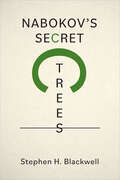- Table View
- List View
myView Literacy 4.1 Student Interactive
by Julie Coiro Jim Cummins Pat CunninghamNIMAC-sourced textbook
myView Literacy 4.2 Student Interactive
by Julie Coiro Jim Cummins Pat CunninghamNIMAC-sourced textbook
myView Literacy 4.2 Student Interactive
by Julie Coiro Jim Cummins Pat CunninghamNIMAC-sourced textbook
myView Literacy 5.1 Student Interactive
by Julie Coiro Jim Cummins Pat CunninghamNIMAC-sourced textbook
myView Literacy 5.2 Student Interactive
by Julie Coiro Jim Cummins Pat CunninghamNIMAC-sourced textbook
myView Literacy K.1 Student Interactive
by Julie Coiro Jim Cummins Pat CunninghamNIMAC-sourced textbook
myView Literacy K.2 Student Interactive
by Julie Coiro Jim Cummins Pat CunninghamNIMAC-sourced textbook
myView Literacy K.3 Student Interactive
by Julie Coiro Jim Cummins Pat CunninghamNIMAC-sourced textbook
myView Literacy K.4 Student Interactive
by Julie Coiro Jim Cummins Pat CunninghamNIMAC-sourced textbook
myView Literacy K.5 Student Interactive
by Julie Coiro Jim Cummins Pat CunninghamNIMAC-sourced textbook
N by E
by Rockwell KentA classic tale of seafaring, shipwreck, and survival, reprinted from Wesleyan University Press's 1978 facsimile of the original. When artist, illustrator, writer, and adventurer Rockwell Kent first published N by E in a limited edition in 1930, his account of a voyage on a 33-foot cutter from New York Harbor to the rugged shores of Greenland quickly became a collectors' item. Little wonder, for readers are immediately drawn to Kent's vivid descriptions of the experience; we share "the feeling of wind and wet and cold, of lifting seas and steep descents, of rolling over as the wind gusts hit," and the sound "of wind in the shrouds, of hard spray flung on a drum-tight canvas, of rushing water at the scuppers, of the gale shearing a tormented sea." When the ship sinks in a storm-swept fjord within 50 miles of its destination, the story turns to the stranding and subsequent rescue of the three-man crew, salvage of the vessel, and life among native Greenlanders. Magnificently illustrated by Kent's wood-block prints and narrated in his poetic and highly entertaining style, this tale of the perils of killer nor'easters, treacherous icebergs, and impenetrable fog—and the joys of sperm whales breaching or dawn unmasking a longed-for landfall—is a rare treat for old salts and landlubbers alike.
N.H., The Ladies Dictionary (1694)
by John Considine Sylvia BrownThe ladies dictionary, being a general entertainment for the fair-sex was published on 19 March 1694 by John Dunton. No compiler was named on the title page, but the dedication by 'the author' addressed 'to the Ladies, Gentlewomen, and Others, of the Fair-Sex' was signed 'N. H.' The book offers around 1950 lexical and encyclopaedic entries, the great majority excerpted either verbatim or with some degree of abridgement or adaptation from other published books. It was the first substantial reference book to be published in England with women as its principal target audience, and was arguably the first alphabetically-arranged encyclopaedia to be published in English. The editor's introduction in this edition starts with an overview of the publisher John Dunton, and goes on to discuss the compilers of LD; its sources; its editing, printing and proof-reading; and its advertising, publication and afterlife. It concludes with lists of primary and secondary sources (including all the identified sources of LD). The reproduction of the dictionary that follows is from the Robert H. Taylor collection at Princeton. Because LD is irregularly alphabetized, the reproduction is followed by a new index of entries in strict alphabetical order, with their sources identified.
NAB Legal Guide to Broadcast Law and Regulation
by Jean Benz Jane E. Mago Jerianne TimmermanTo guide the industry in the 21st century, counsel for the National Association of Broadcasters (NAB) and leading attorneys have prepared the only up-to-date, comprehensive broadcast regulatory publication: NAB’s Legal Guide to Broadcast Law and Regulation. Known for years as the "voice" for broadcast law, this publication addresses the full range of FCC regulatory issues facing radio and television broadcasters, as well as intellectual property, First Amendment, cable and satellite, and increasingly important online issues. It gives practicing attorneys, in-house counsel, broadcasters and other communications industry professionals practical "how to" advice on topics ranging literally from "a" (advertising) to "z" (zoning). Now in its 6th edition, NAB’s Legal Guide to Broadcast Law and Regulation is available to keep you current on changes in the law, significant court decisions, FCC rules, agency policies and applied solutions. The National Association of Broadcasters is a nonprofit trade association that advocates on behalf of local radio and television stations and broadcast networks before Congress, the Federal Communications Commission and other federal agencies, and the courts.
Nabati Poetry: The Oral Poetry of Arabia
by Saad Abdullah SowayanThis title is part of UC Press's Voices Revived program, which commemorates University of California Press’s mission to seek out and cultivate the brightest minds and give them voice, reach, and impact. Drawing on a backlist dating to 1893, Voices Revived makes high-quality, peer-reviewed scholarship accessible once again using print-on-demand technology. This title was originally published in 1985.
NABE Review of Research and Practice: Volume 3
by Virgina Gonzalez Josefina TinajeroThe National Association of Bilingual Education (NABE) published electronic issues of Volumes 1 and 2 of the NABE Journal of Research and Practice to offer archival records of 2002 and 2003 NABE conferences presentations. Beginning with Volume 3, the title of the publication is changed to NABE Review of Research and Practice and is published by Lawrence Erlbaum Associates, Inc. for NABE. NABE Review of Research and Practice, Volume 3 fulfills the following goals: *to establish an annual archival record of cutting-edge NABE conference presentations that generate new knowledge and advance the field of bilingual education research; *to mentor junior scholars within the academic setting by providing an outlet for developing a publication record with the assistance of established scholars, and by publishing guidelines for developing high-quality dissertation research proposals and completed studies, and for university-based efforts to mentor doctoral students in bilingual education;*to offer, in the Research section, an outlet for theoretical and applied research studies that represent innovative conceptual and philosophical perspectives, and that also implement innovative methodologies for solving theoretical and applied problems in bilingual education;*to provide, in the Applied Education/Action Research section, an outlet for case studies, position papers, and action research that comes from practitioners in the field of bilingual education who are implementing research methodologies in their own classrooms or school districts (e.g., teacher-based research, evaluation studies conducted in the implementation of bilingual education federal and state grants); and*to present, in the Position Papers and Reflections section, reflections of experiences of bilingual researchers, practitioners, and public school and higher education students that give insightful self-accounts of the experiences of ethnic minority students, scholars, and educators that allow readers to learn from them as role models and advocates. For further information on NABE conferences and publications visit the NABE Web page at www.nabe.org.
Nabokov: The Mystery of Literary Structures
by Leona TokerVladimir Nabokov described the literature course he taught at Cornell as "a kind of detective investigation of the mystery of literary structures." Leona Toker here pursues a similar investigation of the enigmatic structures of Nabokov's own fiction. According to Toker, most previous critics stressed either Nabokov’s concern with form or the humanistic side of his works, but rarely if ever the two together. In sensitive and revealing readings of ten novels, Toker demonstrates that the need to reconcile the human element with aesthetic or metaphysical pursuits is a constant theme of Nabokov’s and that the tension between technique and content is itself a key to his fiction. Written with verve and precision, Toker’s book begins with Pnin and follows the circular pattern that is one of her subject’s own favored devices.
Nabokov and the Question of Morality
by Michael Rodgers Susan Elizabeth SweeneyThe first collection to address the vexing issue of Nabokov's moral stances, this book argues that he designed his novels and stories as open-ended ethical problems for readers to confront. In a dozen new essays, international Nabokov scholars tackle those problems directly while addressing such questions as whether Nabokov was a bad reader, how he defined evil, if he believed in God, and how he constructed fictional works that led readers to become aware of their own moral positions. In order to elucidate his engagement with aesthetics, metaphysics, and ethics, Nabokov and the Question of Morality explores specific concepts in the volume's four sections: "Responsible Reading," "Good and Evil," "Agency and Altruism," and "The Ethics of Representation. " By bringing together fresh insights from leading Nabokovians and emerging scholars, this book establishes new interdisciplinary contexts for Nabokov studies and generates lively readings of works from his entire career.
Nabokov and the Real World: Between Appreciation and Defense
by Robert AlterFrom award-winning literary scholar Robert Alter, a masterful exploration of how Nabokov used artifice to evoke the dilemmas, pain, and exaltation of the human conditionAdmirers and detractors of Vladimir Nabokov have viewed him as an ingenious contriver of literary games, teasing and even outsmarting his readers through his self-reflexive artifice and the many codes and puzzles he devises in his fiction. Nabokov himself spoke a number of times about reality as a term that always has to be put in scare quotes. Consequently, many critics and readers have thought of him as a writer uninterested in the world outside literature. Robert Alter shows how Nabokov was passionately concerned with the real world and its complexities, from love and loss to exile, freedom, and the impact of contemporary politics on our lives.In these illuminating and exquisitely written essays, Alter spans the breadth of Nabokov's writings, from his memoir, lectures, and short stories to major novels such as Lolita. He demonstrates how the self-reflexivity of Nabokov's fiction becomes a vehicle for expressing very real concerns. What emerges is a portrait of a brilliant stylist who is at once serious and playful, who cared deeply about human relationships and the burden of loss, and who was acutely sensitive to the ways political ideologies can distort human values.Offering timeless insights into literature’s most fabulous artificer, Nabokov and the Real World makes an elegant and compelling case for Nabokov's relevance today.
Nabokov, History and the Texture of Time (Routledge Transnational Perspectives on American Literature)
by Will NormanThis book argues that the apparent evasion of history in Vladimir Nabokov’s fiction conceals a profound engagement with social, and therefore political, temporalities. While Nabokov scholarship has long assumed the same position as Nabokov himself — that his works exist in a state of historical exceptionalism — this study restores the content, context, and commentary to Nabokovian time by reading his American work alongside the violent upheavals of twentieth-century ideological conflicts in Europe and the United States. This approach explores how the author’s characteristic temporal manipulations and distortions function as a defensive dialectic against history, an attempt to salvage fiction for autonomous aesthetics. Tracing Nabokov’s understanding of the relationship between history and aesthetics from nineteenth-century Russia through European modernism to the postwar American academy, the book offers detailed contextualized readings of Nabokov’s major writings, exploring the tensions, fissures, and failures in Nabokov’s attempts to assert aesthetic control over historical time. In reading his response to the rise of totalitarianism, the Holocaust, and Cold War, Norman redresses the commonly-expressed admiration for Nabokov’s heroic resistance to history by suggesting the ethical, aesthetic, and political costs of reading and writing in its denial. This book offers a rethinking of Nabokov’s location in literary history, the ideological impulses which inform his fiction, and the importance of temporal aesthetics in negotiating the matrices of modernism.
Nabokov Noir: Cinematic Culture and the Art of Exile
by Luke ParkerNabokov Noir places Vladimir Nabokov's early literary career—from the 1920s to the 1940s—in the context of his fascination with silent and early sound cinema and the chiaroscuro darkness and artificial brightness of the Weimar era, with its movie palaces, cultural Americanism, and surface culture. Luke Parker argues that Nabokov's engagement with the cinema and the dynamics of mass culture more broadly is an art of exile, understood both as literary poetics and practical strategy.Obsessive and competitive, fascinated and disturbed, Nabokov's Russian-language fiction and essays, written in Berlin, present a compelling rethinking of modernist-era literature's relationship to an unabashedly mass cultural phenomenon. Parker examines how Nabokov's involvement with the cinema as actor, screenwriter, moviegoer, and, above all, chronicler of the cinematized culture of interwar Europe enabled him to flourish as a transnational writer. Nabokov, Parker shows, worked tirelessly to court publishers and film producers for maximum exposure for his fiction across languages, media, and markets. In revealing the story of Nabokov's cinema praxis—his strategic instrumentalization of the movie industry—Nabokov Noir reconstructs the deft response of a modern master to the artificial isolation and shrinking audiences of exile.
Nabokov's Art of Memory and European Modernism
by John Burt FosterDespite Vladimir Nabokov's hostility toward literary labels, he clearly recognized his own place in cultural history. In a fresh approach stressing Nabokov's European context, John Foster shows how this writer's art of memory intersects with early twentieth-century modernism. Tracing his interests in temporal perspective and the mnemonic image, in intertextual "reminiscences," and in individuality amid cultural multiplicity, the book begins with such early Russian novels as Mary, then treats his emerging art of memory from Laughter in the Dark to The Gift. After discussing the author's cultural repositioning in his first English novels, Foster turns to Nabokov's masterpiece as an artist of memory, the autobiography Speak, Memory, and ends with an epilogue on Pale Fire.As a cross-cultural overview of modernism, this book examines how Nabokov navigated among Proust and Bergson, Freud and Mann, and Joyce and Eliot. It also explores his response to Baudelaire and Nietzsche as theorists of modernity, and his sense of Dostoevsky, Tolstoy, and Pushkin as modernist precursors. As an approach to Nabokov, the book reflects the heightened importance of autobiography in current literary study. Other critical issues addressed include Bakhtin's theory of intertextuality, deconstructive views of memory, Benjamin's modernism of memory, and Nabokov's assumptions about modernism as a concept.
Nabokov’s Eros and the Poetics of Desire
by Maurice CouturierNabokov gained international fame with Lolita, a highly erotic and morally disturbing novel. Through its comprehensive study of the amorous and sexual behaviors of Nabokov's characters this book shows how Eros, both as a clown or a pervert, contributes to the poetic excellence of his novels and accounts for the unfolding of the plots.
Nabokov's Favorite Word Is Mauve: What the Numbers Reveal About the Classics, Bestsellers, and Our Own Writing
by Ben BlattWhat are our favorite authors’ favorite words? Which bestselling writer uses the most clichés? How can we judge a book by its cover? Data meets literature in this playful and informative look at our favorite authors and their masterpieces. “A literary detective story: fast-paced, thought-provoking, and intriguing.” —Brian Christian, coauthor of Algorithms to Live ByThere’s a famous piece of writing advice—offered by Ernest Hemingway, Stephen King, and myriad writers in between—not to use -ly adverbs like “quickly” or “fitfully.” It sounds like solid advice, but can we actually test it? If we were to count all the -ly adverbs these authors used in their careers, do they follow their own advice compared to other celebrated authors? What’s more, do great books in general—the classics and the bestsellers—share this trait? In Nabokov’s Favorite Word Is Mauve, statistician and journalist Ben Blatt brings big data to the literary canon, exploring the wealth of fun findings that remain hidden in the works of the world’s greatest writers. He assembles a database of thousands of books and hundreds of millions of words, and starts asking the questions that have intrigued curious word nerds and book lovers for generations: What are our favorite authors’ favorite words? Do men and women write differently? Are bestsellers getting dumber over time? Which bestselling writer uses the most clichés? What makes a great opening sentence? How can we judge a book by its cover? And which writerly advice is worth following or ignoring? Blatt draws upon existing analysis techniques and invents some of his own. All of his investigations and experiments are original, conducted himself, and no math knowledge is needed to understand the results. Blatt breaks his findings down into lucid, humorous language and clear and compelling visuals. This eye-opening book will provide you with a new appreciation for your favorite authors and a fresh perspective on your own writing, illuminating both the patterns that hold great prose together and the brilliant flourishes that make it unforgettable.
Nabokov's Pale Fire: The Magic of Artistic Discovery
by Brian BoydPale Fire is regarded by many as Vladimir Nabokov's masterpiece. The novel has been hailed as one of the most striking early examples of postmodernism and has become a famous test case for theories about reading because of the apparent impossibility of deciding between several radically different interpretations. Does the book have two narrators, as it first appears, or one? How much is fantasy and how much is reality? Whose fantasy and whose reality are they? Brian Boyd, Nabokov's biographer and hitherto the foremost proponent of the idea that Pale Fire has one narrator, John Shade, now rejects this position and presents a new and startlingly different solution that will permanently shift the nature of critical debate on the novel. Boyd argues that the book does indeed have two narrators, Shade and Charles Kinbote, but reveals that Kinbote had some strange and highly surprising help in writing his sections. In light of this interpretation, Pale Fire now looks distinctly less postmodern--and more interesting than ever. In presenting his arguments, Boyd shows how Nabokov designed Pale Fire for readers to make surprising discoveries on a first reading and even more surprising discoveries on subsequent readings by following carefully prepared clues within the novel. Boyd leads the reader step-by-step through the book, gradually revealing the profound relationship between Nabokov's ethics, aesthetics, epistemology, and metaphysics. If Nabokov has generously planned the novel to be accessible on a first reading and yet to incorporate successive vistas of surprise, Boyd argues, it is because he thinks a deep generosity lies behind the inexhaustibility, complexity, and mystery of the world. Boyd also shows how Nabokov's interest in discovery springs in part from his work as a scientist and scholar, and draws comparisons between the processes of readerly and scientific discovery. This is a profound, provocative, and compelling reinterpretation of one of the greatest novels of the twentieth century.
Nabokov’s Secret Trees
by Stephen H. BlackwellIn nearly all his literary works, Vladimir Nabokov inscribed networks of trees to create meaningful patterns of significance around one or more of his passionate interests – in consciousness, memory, creativity, epistemology, ethics, and love, with a deep connection to nature serving as a constant undercurrent. Nabokov’s Secret Trees explores this neglected area of his art, one that positions nature as a hidden but vital core of his work. The book presents an entirely new, previously unsuspected Nabokov, one who crafts intricate patterns of arboreal imagery lurking behind his often-baroque psychological narratives. It reveals how Nabokov activates arboreal potentials by exploring the hidden ubiquity of trees, their essence as complex natural phenomena, and their role as quiet presences that have accompanied and fostered human civilization and art since their beginnings. The book uncovers how trees offer a rich and intricate field for structural, semantic, allusive, and metaphorical exploration. Based on the published corpus as well as archival materials, Nabokov’s Secret Trees demonstrates that trees not only populate Nabokov’s art in stunning, yet furtive, abundance, but also as mysterious natural entities, directly animating his works’ worlds and his readers’ experience of them.


